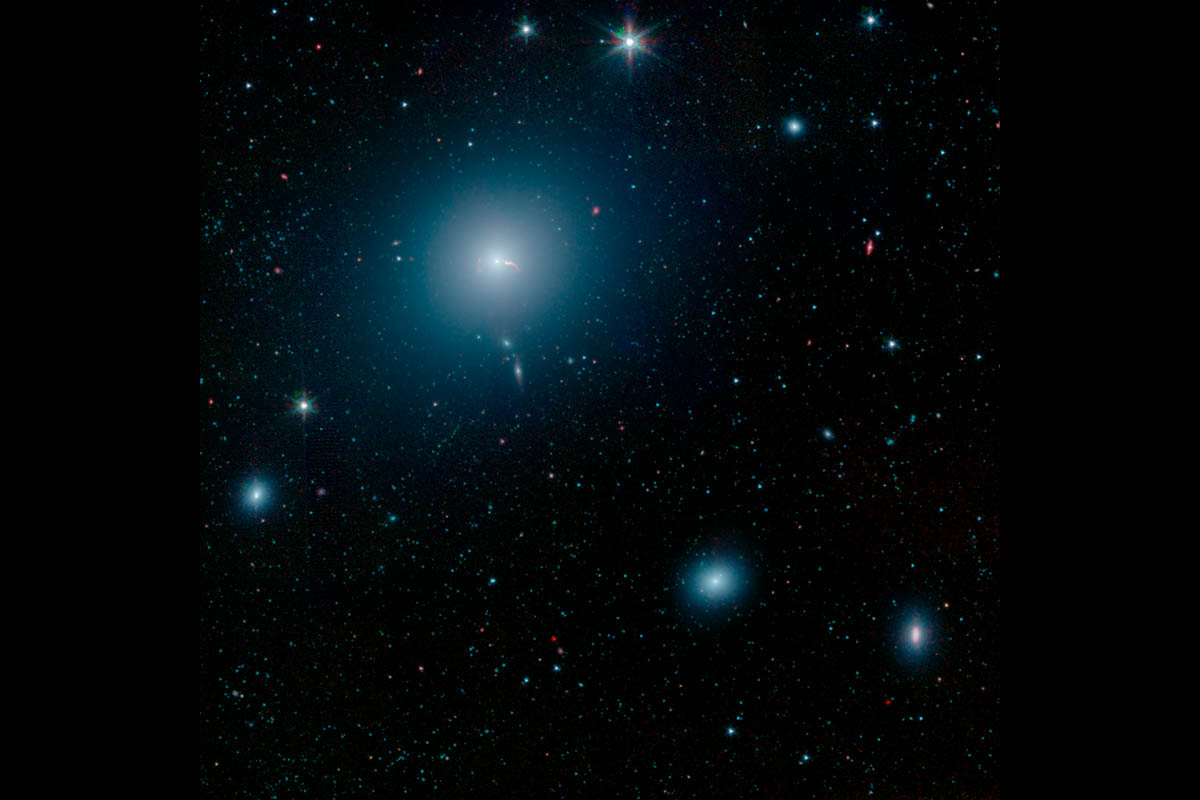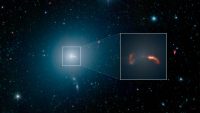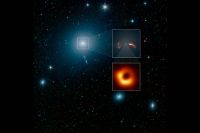The galaxy M87 looks like a hazy, blue space-puff in this image from NASA’s Spitzer Space Telescope. At the galaxy’s center is a supermassive black hole that spews two jets of material out into space. (NASA/JPL-Caltech/IPAC)
Home The galaxy M87 looks like a hazy, blue space-puff in this image from NASA’s Spitzer Space Telescope. At the galaxy’s center is a supermassive black hole that spews two jets of material out into space. (NASA/JPL-Caltech/IPAC) The galaxy M87 looks like a hazy, blue space-puff in this image from NASA's Spitzer Space Telescope. At the galaxy's center is a supermassive black hole that spews two jets of material out into space. (NASA/JPL-Caltech/IPAC)




